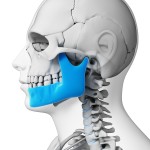
Around 15% of adults are thought to be affected by temporomandibular disorders and they are associated with morbidity and a reduction in quality of life. THte management of temporomandibular disorders ranges from non-pharmacological conservative treatment to invasive surgical procedures. Botulinum toxin (BTX) has increasingly been used in the management of head and neck pain including temporomandibular disorders.
The aim of this review was to assess the use and efficacy of botulinum toxin (BTX) in the management of temporomandibular joint disorders (TMD) and masticatory myofascial pain
Methods
Searches were conducted in the PubMed, Embase, Scopus, and the Cochrane Central Register of Controlled Trials (CENTRAL) databases. Randomised controlled trials (RCTs) or quasi-RCTs published in English were considered. Study quality was assessed using the Cochrane risk-of-bias tool and Jadad score. The primary outcome was subjective assessment based on a visual analogue scale (VAS) for pain, or patient questionnaires. Secondary outcomes were maximal mouth opening and adverse events that were associated with BTX. A narrative summary was presented.
Results
- 7 RCTs (2 cross-over) involving a total of 220 patients were included.
- All patients had TMD diagnosed using specific diagnostic criteria.
- The masseter was injected in all studies with both masseter and temporalis in 4 studies.
- 4 studies suggested that BTX injections reduced pain in the short-term while 2 studies showed no significant improvement.
- 3 studies assessed maximal mouth opening with mixed results.
- 3 studies reported temporary adverse effects that were known side effects of BTX.
Conclusions
The authors concluded: –
We have found variation in the study designs, inconsistent reporting on assessment tools, and heterogeneous study groups. Overall, the level of bias was moderate to high, making the evidence moderate to low. Despite showing benefits, clear consensus is lacking on the therapeutic benefit of BTX in the management of myofascial TMD. Further RCT with minimal bias, larger sample sizes, and longer follow-up periods are now needed. We must find the optimal target site and dose, conduct feasibility tests for the cost of BTX, and find out whether the benefit:cost ratio is clinically acceptable. Nevertheless, this review has shown that in patients with myofascial TMD who have had at least three months’ appropriate conservative management, BTX can improve outcomes.
Comments
A 2014 Cochrane review by Soares et al looked the broader question of BTX for myofascial pain in 2014. In 2015 a review by Chen et al (Dental Elf -15th May 2015) looked at the same at this same question as this new review.The current review searched a number of major databases for RCTs addressing the main question and while they indicated that the PRISMA statement was followed the methodology does not indicate if independent and duplicate selection a, data abstraction and quality assessment of the studies was undertaken. Quality assessment was undertaken using both the Cochrane risk of bias tool and the Jadad scale. The use of the Jadad scale is not recommended and it is interesting to note that one of two on the studies that score well on the Jadad scale are scored as high risk on two domains of the Cochrane tool. It also worth noting that 6 of the included RCTs are scored at high risk of bias in one or more of the domains of the Cochrane tool. This new review includes just 2 more studies than the 2015 review by Chen et al and all the included studies are small and of short duration with 6 out of 7 having domains at high risk of bias. There is also variation in dosing regimens and frequency of injections. Consequently, the available evidence to support the use of BTX for temporomandibular joint disorders is low to very low and high quality well reported RCTs with larger sample sizes and longer follow times are needed to properly assess the effectiveness of BTX for temporomandibular joint disorders.
Links
Primary Paper
Thambar S, Kulkarni S, Armstrong S, Nikolarakos D. Botulinum toxin in the management of temporomandibular disorders: a systematic review [published online ahead of print, 2020 Mar 3]. Br J Oral Maxillofac Surg. 2020;S0266-4356(20)30062-0. doi:10.1016/j.bjoms.2020.02.007
Other references
Soares A, Andriolo RB, Atallah ÁN, da Silva EMK. Botulinum toxin for myofascial pain syndromes in adults. Cochrane Database of Systematic Reviews 2014, Issue 7. Art. No.: CD007533. DOI: 10.1002/14651858.CD007533.pub3.
Dental Elf -15th May 2015
